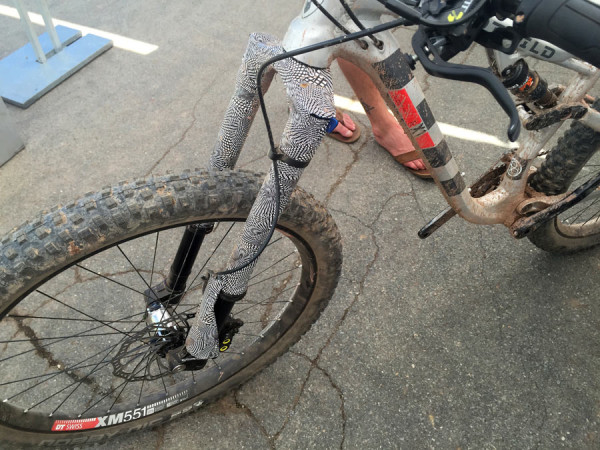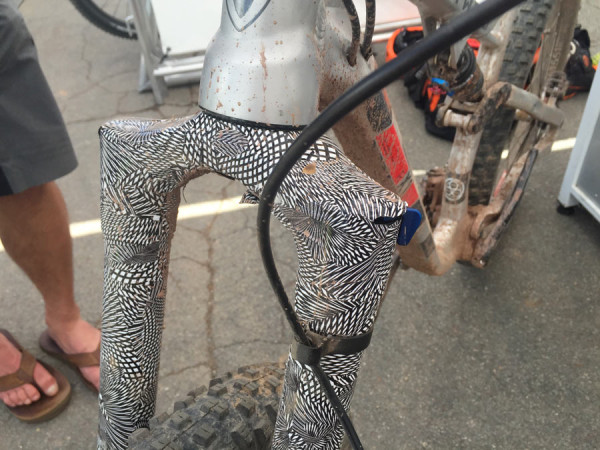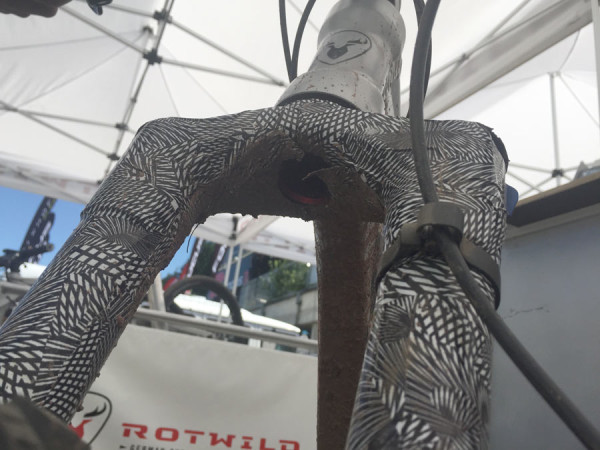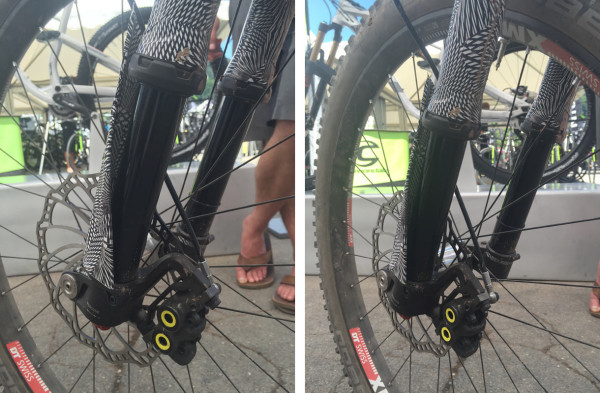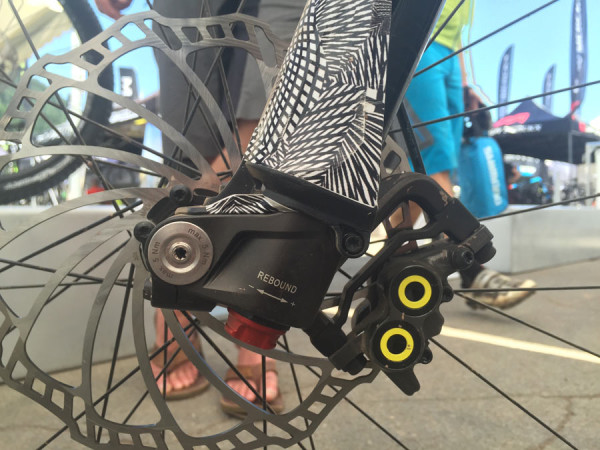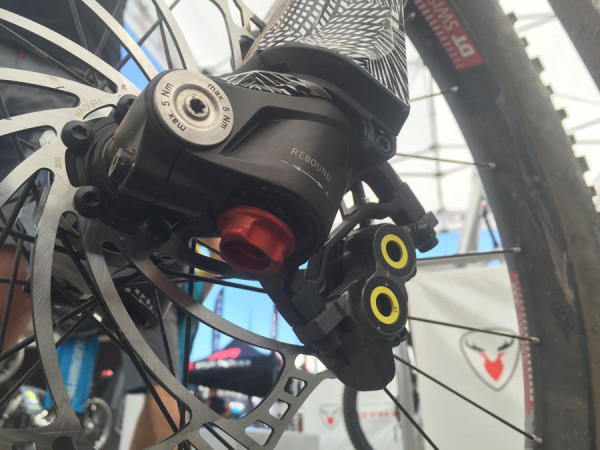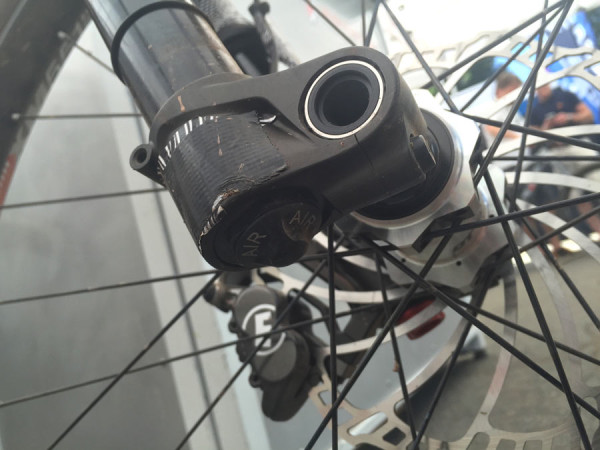Aboard a couple of Rotwild’s new X1 trail bike were prototype inverted suspension forks disguised in patterned duct tape. While their reps wouldn’t say anything about them, we took a close look and lots of pics to make an educated guess as to which brand might be testing it out.
The anodized knob colors, the shapes and fonts and some of the finer details suggest its a Magura, a notion reinforced by the Magura brakes mounted to them (the other bikes had Shimano brakes).
The first thing that jumps out about it is that it’s mated to a 140mm travel bike, putting it in a different category than the RS-1. That could mean instant competition for the X-Fusion Revel when it finally starts shipping (it’s still in development, and we saw the latest versions at their HQ in April, we’re just not allowed to talk about them yet).
Compared to other Magura forks (or most any brand, for that matter), the blue compression adjustment knob sits on the left. From the looks of it, it’s more of an on/off (open/locked) or multi position (open/firm/locked) rather than a 20-something click adjustment.
The pressed in steerer tube’s bottom is shaped just like the Magura forks we’ve tested.
The black seal caps on the bottom of the uppers also strongly resemble Magura’s design motif.
This one’s either being tested with only one brush guard, or the right side got ripped off.
The brush guard mounts with a small bolt on the outside rear. Note the bolt-in thru axle, just like Magura uses. And on the opposite side is a nice wide, stepped opening that should fit their integrated Torx tool quite nicely.
Rebound adjustment on the bottom left…
…and air valve on the right. Could be a 20mm thru axle, which would make sense for a long travel upside down (USD) fork, with additional bolts to clamp it down. It’ll be interesting to see if the axle can be threaded out without loosening the clamps, but all bolts are Torx and should at least work with the included tool that slots into the axle.
Magura made no mention of it at their press camp in Sedona this year, so we’re guessing fall tradeshows might be the earliest we’ll see something official.
